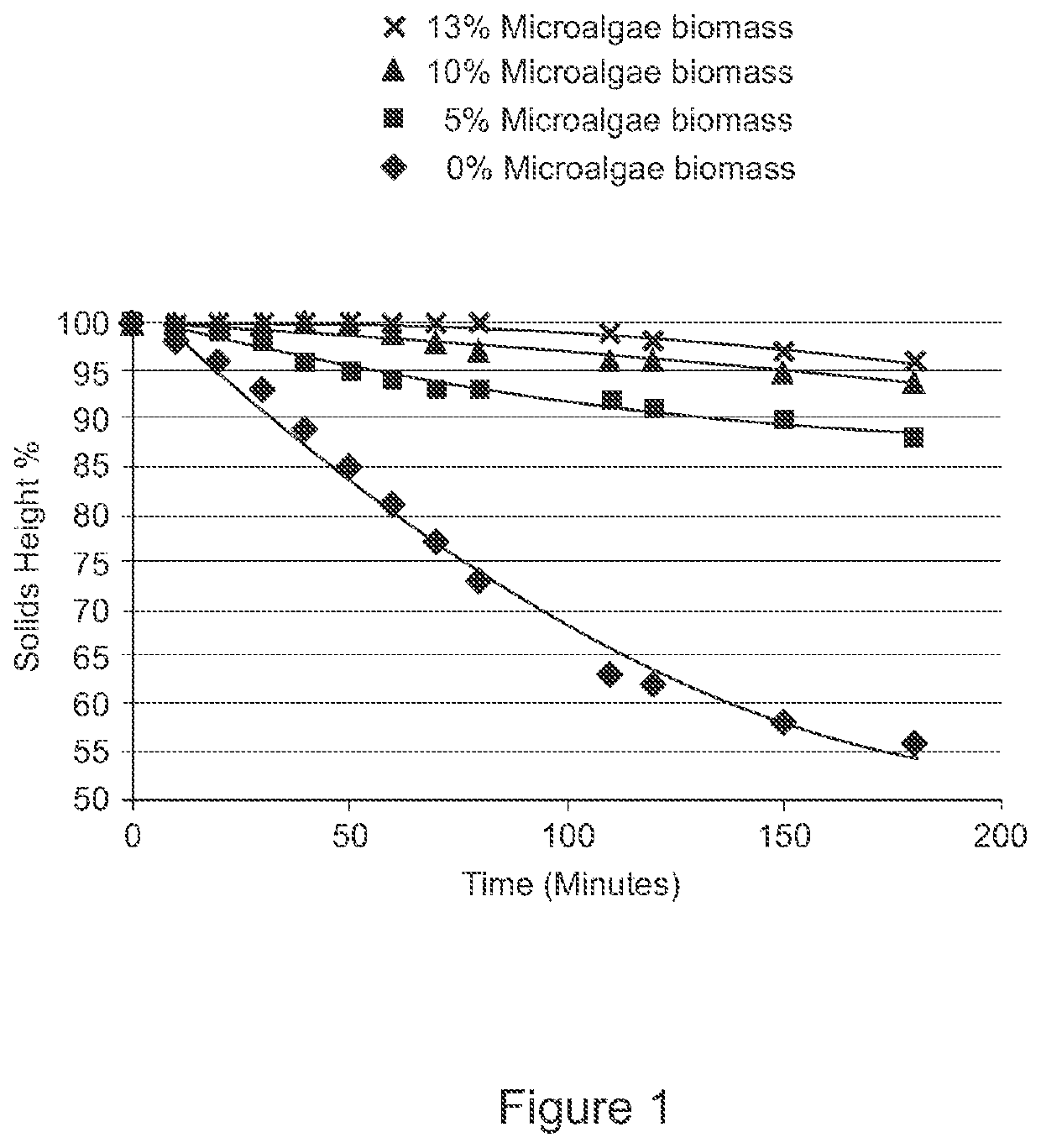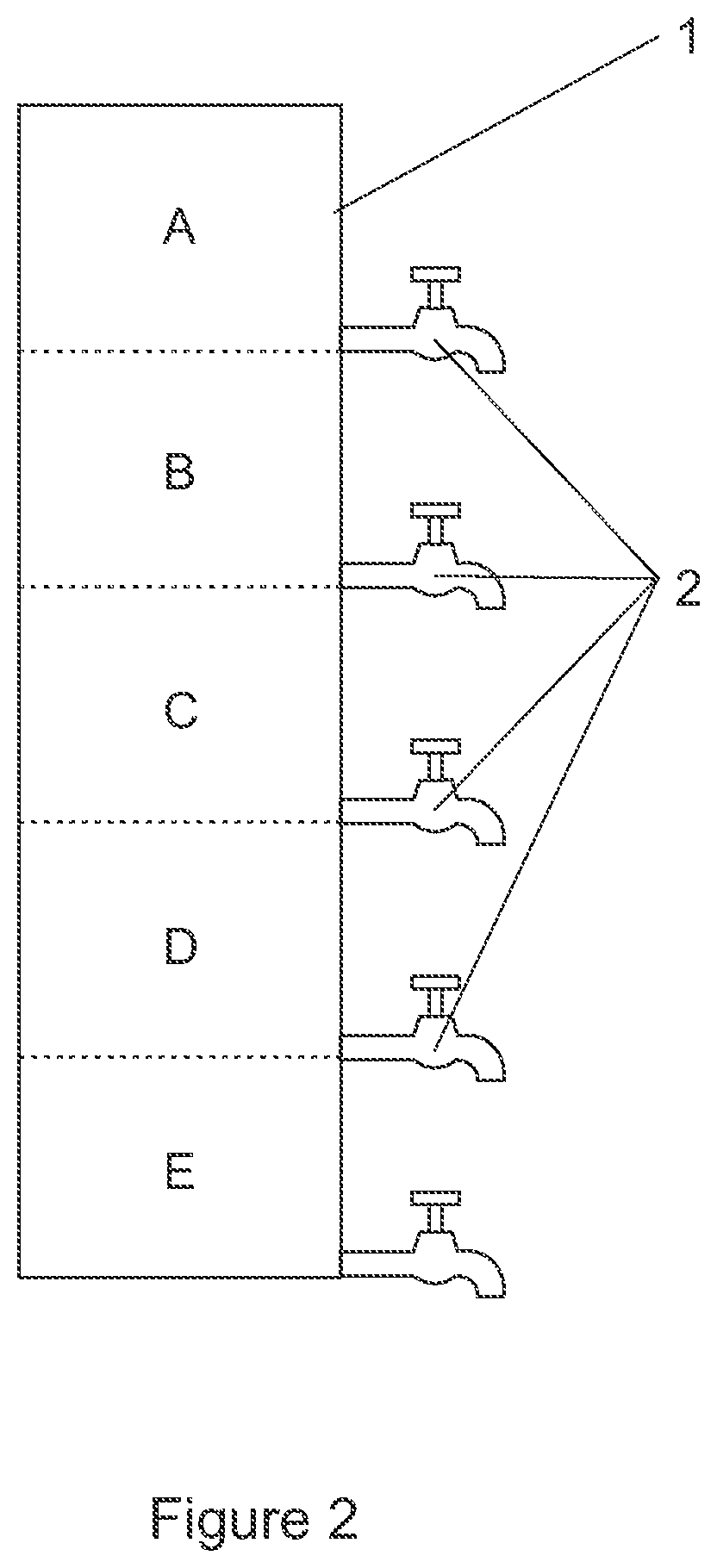Upgrading coal fines using microalgae
a technology of microalgae and fines, applied in the direction of fuels, transportation and packaging, separation processes, etc., can solve the problems of large quantities of fines that cannot be used, difficult to separate, and fine coal
- Summary
- Abstract
- Description
- Claims
- Application Information
AI Technical Summary
Benefits of technology
Problems solved by technology
Method used
Image
Examples
example 1
ion of the Stabilization of Coal Fines Slurries by Adsorbed Microalgae
[0033]To 100 mL of coal slurry containing 124.8 g of solids / L of slurry there were added various amounts of wet microalgae biomass to give microalgae biomass loadings of approximately 0, 5, 10 and 13% on a mass / mass basis to the coal. The microalgae biomass fine coal slurry was mixed thoroughly to ensure complete mixing of the microalgae biomass into the fine coal slurry. The mixtures so derived were transferred into 100 mL measuring cylinders, and the rate of settling of the solids from the mixtures was monitored. It was noted that the fine coal solids in the measuring cylinder that contained no microalgae settled significantly faster than fine coal solids that were mixed with microalgae biomass. It was also noted that the effect of the microalgae biomass on the electrostatic properties of the fine coal solids revealed itself as non-adherence to the glass measuring cylinder surface of the particles when microalga...
example 2
tion of the Effect of Microalgae Adsorption on the Settling of Different Size Ranges of Coal Fines
[0035]For these tests a graduated volumetric cylinder (1) having a 2 litre capacity was modified, as illustrated in FIG. 2, by the installation of five taps (2) so as to give approximately equal volumes in each of the five sections indicated by the letters A-E in FIG. 2.
[0036]Coal was milled and screened into fractions falling in the following ranges: 500-150 μm; 150-106 μm; 106-53 μm; <53 μm. From each fraction a sample of 200 g was taken, mixed with 2000 g of water using a high-speed stick blender and poured into the apparatus shown in FIG. 2. The mixture was allowed to stand for 15 minutes before all the liquid in each of the sections marked A-E was collected in separate containers starting at the top and working downwards. The coal solids from each section were isolated, the amount determined, and the energy value of the coal solids from each section measured. The results are shown ...
PUM
| Property | Measurement | Unit |
|---|---|---|
| concentration | aaaaa | aaaaa |
| particle size | aaaaa | aaaaa |
| concentrations | aaaaa | aaaaa |
Abstract
Description
Claims
Application Information
 Login to View More
Login to View More - R&D
- Intellectual Property
- Life Sciences
- Materials
- Tech Scout
- Unparalleled Data Quality
- Higher Quality Content
- 60% Fewer Hallucinations
Browse by: Latest US Patents, China's latest patents, Technical Efficacy Thesaurus, Application Domain, Technology Topic, Popular Technical Reports.
© 2025 PatSnap. All rights reserved.Legal|Privacy policy|Modern Slavery Act Transparency Statement|Sitemap|About US| Contact US: help@patsnap.com


